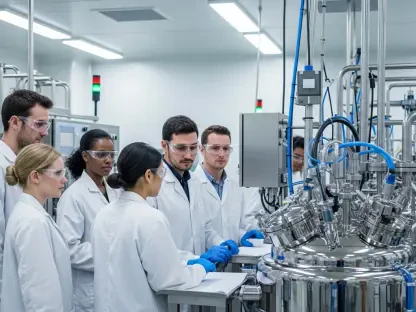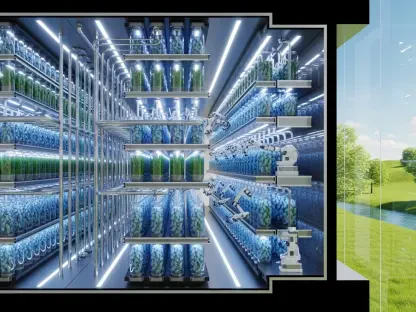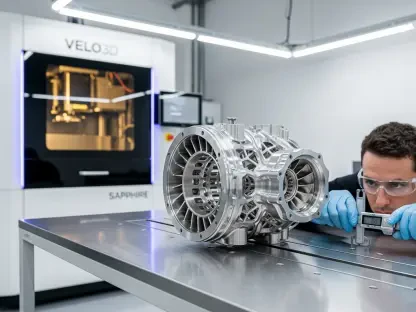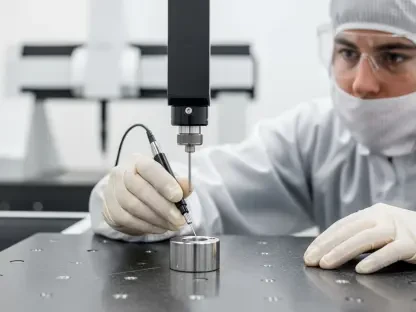Setting the Stage for a Fertilizer Revolution
In a nation where agriculture underpins the livelihood of millions, India faces a staggering gap in fertilizer supply, importing 6-7 million tonnes annually to meet a demand of 20 million tonnes, exposing vulnerabilities amid global supply chain disruptions. Enter Paradeep Phosphates Ltd (PPL), a Bhubaneswar-based powerhouse in the phosphatic fertilizer sector, which currently holds a 12% market share. With a strategic plan to double that to 25% by FY26, PPL is positioning itself as a linchpin in India’s quest for agricultural self-reliance. This market analysis delves into the trends, data, and projections surrounding PPL’s ambitious growth strategy, exploring how the company aims to reshape the industry landscape while addressing national imperatives.
Unpacking the Market Dynamics and PPL’s Strategic Moves
Current Landscape of India’s Phosphatic Fertilizer Sector
India’s fertilizer industry operates under a critical imbalance, with domestic production capacity stuck at 14 million tonnes against a much higher demand. This shortfall has historically forced reliance on imports, particularly for diammonium phosphate (DAP), with countries like China once supplying up to 2 million tonnes annually before recent cutbacks. Geopolitical tensions and export restrictions from key suppliers like Russia have further strained availability, pushing up costs and threatening food security. PPL, already a significant player with an annual output of 2.6 million tonnes, sees this gap as an opportunity to step up, aligning its expansion with India’s broader push for self-sufficiency under initiatives like Atmanirbhar Bharat.
PPL’s Capacity Expansion as a Game-Changer
At the heart of PPL’s strategy lies a robust plan to scale production from 2.6 million tonnes to 3.7 million tonnes by FY26, a move backed by a substantial investment of over ₹1,500 crore (approximately $180 million USD). This includes upgrades at existing facilities in Paradeep, Goa, and Mangalore, alongside the acquisition of Mangalore Chemicals & Fertilizers Ltd (MCFL), which adds 700,000 tonnes of capacity. A new 600,000-tonne plant in Mangalore, combined with a 40% increase in phosphoric acid production to over 700,000 tonnes, further bolsters output. Granulation capacity is also set to rise by more than 1 million tonnes across coastal operations, enhancing product reach. While logistics and raw material sourcing present challenges, this aggressive expansion could significantly cut India’s import dependency if executed seamlessly.
Financial Fortitude Fueling Growth
PPL’s financial health provides a strong foundation for its ambitious targets. With a capital base exceeding ₹4,300 crore (around $515 million USD) and long-term debt under ₹1,000 crore (about $120 million USD), the company maintains a balanced approach to funding. Post-MCFL integration, net worth is projected to surpass ₹5,500 crore (approximately $660 million USD), while robust free cash flows support annual capital expenditure of ₹1,000-1,500 crore without over-leveraging. This disciplined strategy stands out in an industry where peers often grapple with debt during rapid scaling, though risks like economic slowdowns or project delays could test PPL’s fiscal resilience.
Securing Supply Chains Amid Global Volatility
Navigating a volatile global market, PPL has prioritized supply chain security through strategic partnerships. A notable long-term agreement with Morocco’s OCP, which controls 70% of global rock phosphate reserves, ensures a steady 1.6 million tonnes of supply. Additionally, sulfuric acid capacity is expanding from 1.3 million to 2 million tonnes annually, while sulfur sourcing of 400,000 tonnes yearly comes from Middle Eastern partners and Indian refiners. Ammonia needs are met through collaborations with Saudi Arabia, the UAE, and Qatar. These moves mitigate risks tied to geopolitical disruptions, though currency fluctuations and over-reliance on specific regions remain potential pitfalls that demand diversified sourcing.
Innovation and Product Diversity Driving Demand
Beyond sheer volume, PPL is focusing on tailored solutions to capture market demand. The company produces unique NPK grades, such as the exclusive 19-19-19 formulation, and plans to operate seven granulation trains post-MCFL acquisition for customized nutrient mixes. A targeted 20-25% annual growth in nano-fertilizers signals a pivot toward sustainable agriculture, addressing soil health and efficiency concerns. This innovation aligns with evolving farmer needs and positions PPL as a leader in modern agricultural inputs, potentially carving out a competitive edge over traditional offerings in the sector.
Policy Support as a Market Enabler
Government policies play a pivotal role in shaping the fertilizer market, with the Nutrient-Based Subsidy (NBS) scheme offering profit visibility of 8-12% before tax. By absorbing global price spikes—evident since 2022 due to geopolitical unrest—the scheme prevents retail price hikes, protecting farmers while ensuring industry stability. This supportive framework incentivizes domestic production, directly benefiting PPL’s expansion goals. As environmental regulations tighten worldwide, firms investing in local capacity and eco-friendly solutions are likely to gain favor, a trend that could amplify PPL’s market traction.
Reflecting on the Path Forward
Looking back, the analysis of Paradeep Phosphates Ltd’s strategy reveals a multi-faceted approach that tackles capacity constraints, financial stability, supply chain risks, and product innovation within India’s fertilizer market. The journey underscores the critical interplay between corporate ambition and national priorities, particularly in reducing a longstanding import burden. For stakeholders, the insights suggest actionable steps: manufacturers could mirror PPL’s focus on domestic scaling and strategic partnerships, while policymakers might consider deeper incentives for localized production. Distributors and farmers, meanwhile, stand to benefit from engaging with advanced offerings like nano-fertilizers to boost yields sustainably. As the industry evolves, the emphasis on resilience and adaptability offers a roadmap for navigating future uncertainties, ensuring that growth in this vital sector remains both achievable and impactful.









